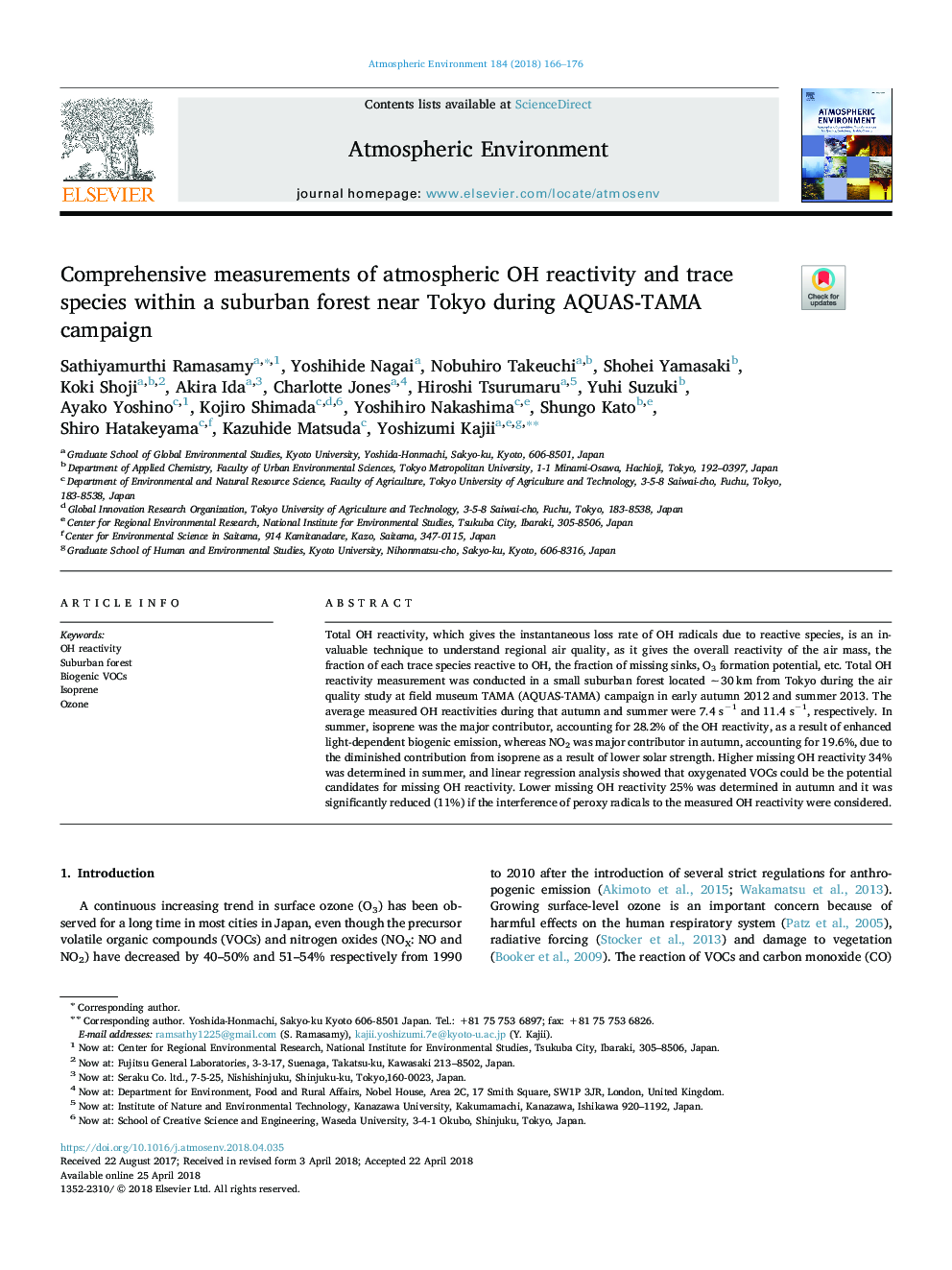| Article ID | Journal | Published Year | Pages | File Type |
|---|---|---|---|---|
| 8863784 | Atmospheric Environment | 2018 | 11 Pages |
Abstract
Total OH reactivity, which gives the instantaneous loss rate of OH radicals due to reactive species, is an invaluable technique to understand regional air quality, as it gives the overall reactivity of the air mass, the fraction of each trace species reactive to OH, the fraction of missing sinks, O3 formation potential, etc. Total OH reactivity measurement was conducted in a small suburban forest located â¼30â¯km from Tokyo during the air quality study at field museum TAMA (AQUAS-TAMA) campaign in early autumn 2012 and summer 2013. The average measured OH reactivities during that autumn and summer were 7.4 sâ1 and 11.4 sâ1, respectively. In summer, isoprene was the major contributor, accounting for 28.2% of the OH reactivity, as a result of enhanced light-dependent biogenic emission, whereas NO2 was major contributor in autumn, accounting for 19.6%, due to the diminished contribution from isoprene as a result of lower solar strength. Higher missing OH reactivity 34% was determined in summer, and linear regression analysis showed that oxygenated VOCs could be the potential candidates for missing OH reactivity. Lower missing OH reactivity 25% was determined in autumn and it was significantly reduced (11%) if the interference of peroxy radicals to the measured OH reactivity were considered.
Related Topics
Physical Sciences and Engineering
Earth and Planetary Sciences
Atmospheric Science
Authors
Sathiyamurthi Ramasamy, Yoshihide Nagai, Nobuhiro Takeuchi, Shohei Yamasaki, Koki Shoji, Akira Ida, Charlotte Jones, Hiroshi Tsurumaru, Yuhi Suzuki, Ayako Yoshino, Kojiro Shimada, Yoshihiro Nakashima, Shungo Kato, Shiro Hatakeyama, Kazuhide Matsuda,
